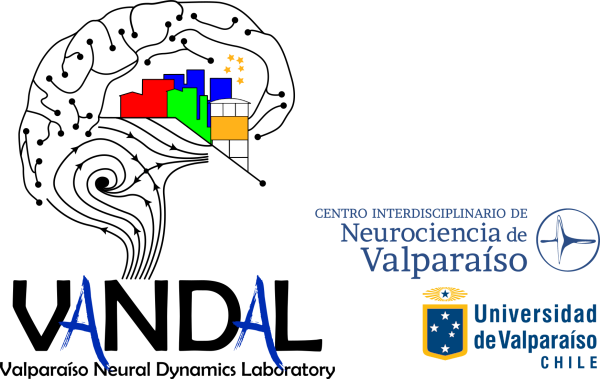
Welcome to VaNDaL
Neurons and neural networks show a complex behavior due to the high non-linearity of their responses to different stimuli. Much of what we currently understand about this behavior has come from the mathematical modeling of the different processes taking place in the cell membrane. The analysis of dynamical systems that arise from the physical and chemical principles underlying the transmission of electrical signals in living organisms, has been a great aid in the understanding of experimental data, and is also a whole research field on its own.
Current interest
Our current research interests include:
- How neural dynamics and network topology can shape the dynamics of a neural network.
The dynamics of networks in the brain show unique features, like the ability to engage in different types and degrees of synchrony and the jumping between several stable attractrors -known as multistability. How these properties arise from the different properties of a network? We are interested in some particular features:- Chaotic behavior of neural oscillators. Individual networks and neural circuits, like many other high-dimensional systems, show a behavior known as chaos. This consists in a high sensitivity to initial conditions, where two systems starting at very close initial conditions diverge exponentially in time. Is this property of the individual nodes relevant to the network behavior?
- Network topology . The topology of neural networks show distinct features, such as being scale-free and showing small-world properties. At the same time, they are different from other typical small-world networks. Which features of the network topology determine or contribute to the multistability of a network?
- Neuromodulatory systems
- How sensory systems detect complex features of the environment:
Understanding the dynamic response of cold-sensitive nerve terminals. Cold receptors in our skin and peripheral tissues display a exquisite sensitivity to changes in temperature. At the same time, they have a spontaneous, rhythmic activity of action potential generation that appears to follow an ongoing sub-threshold oscillation of the membrane potential. Based on previous models that were focused on the oscillatory pattern generation, we developed a model that reproduces both aspects of the response of cold-sensitive nerve endings, by taking into account recent experimental findings. Currently we are using this model to understand the abnormal behavior of these terminals in pathological conditions such as cold allodynia and hypersensitivity to cold. This is in collaboration with Dr. Rodolfo Madrid (USACH)